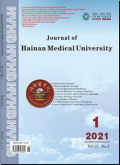Study on the mechanism of Shenling Baizhu Powder in the treatment of diarrhea-type irritable bowel syndrome based on network pharmacology and molecular docking
摘要Objective: Explore the possible intervention mechanism of Shenling Baizhu Powder on IBS-D from network data through network pharmacology and molecular docking simulation technology. Methods: Establish a complete regulatory network of Shenling Baizhu powder on IBS-D after obtaining the active components and drug targets of Shenling Baizhu Powder on the TCMSP platform and obtaining the disease targets of IBS-D from GeneCards and OMIM databases. Then screen out the potential best target of Shenling Baizhu Powder in IBS-D intervention network combining with the PPI network constructed in the STRING database, and screen the potential core of compounds through the molecular docking simulation and comparison with pivecurium bromide. After that,the related gene ontology functions and pathways of Shenling Baizhu Powder in treating IBS-D will be obtained though gene ontology(GO) enrichment analysis through DAVID database and Kyoto encyclo-pedia of genes and genomes(KEGG) pathways enrichment analysis through Bioconductor database. Results: The number of IBS-D disease-related targets was 2,724. And there were 184 active compounds in Shenling Baizhusan, among which 175 could act on IBS-D. After screening, four potential best targets of PTGS2, ESR1, AR and MAPK14 were obtained, and four core compounds of quercetin, luteolin, kaempferol and isorhamnetin were obtained by molecular docking simulation.GO enrichment analysis results showed that there were 92 biological processes, 18 cellular components and 21 molecular functions associated with shenling Baizhu Powder intervention IBS-D process. The results of KEGG pathway enrichment analysis showed that shenling Baizhu Powder had 172 pathways involved in the intervention of IBS-D. Conclusion: The intervention effect of Shenling Baizhu powder on IBS-D was better than pivecurium bromide in terms of the number of targets and the ease of binding to the targets.Its intervention process of IBS-D may be closely related to inflammation, cancer, endocrine disorders and other related reactions and pathways, among which quercetin, luteolin, kaempferol and isorrine are the most potential core compounds in the intervention network, and the four target proteins of PTGS2, ESR1, AR and MAPK14 are the potential best target options in the intervention network.
更多相关知识
- 浏览21
- 被引0
- 下载0


相似文献
- 中文期刊
- 外文期刊
- 学位论文
- 会议论文



 换一批
换一批 换一批
换一批



